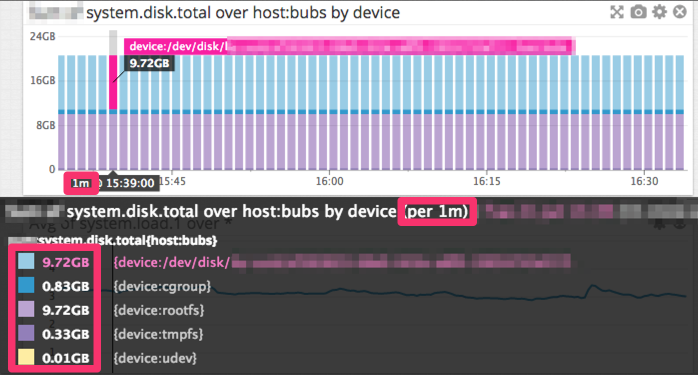- Essentials
- Getting Started
- Agent
- API
- APM Tracing
- Containers
- Dashboards
- Database Monitoring
- Datadog
- Datadog Site
- DevSecOps
- Incident Management
- Integrations
- Internal Developer Portal
- Logs
- Monitors
- Notebooks
- OpenTelemetry
- Profiler
- Search
- Session Replay
- Security
- Serverless for AWS Lambda
- Software Delivery
- Synthetic Monitoring and Testing
- Tags
- Workflow Automation
- Learning Center
- Support
- Glossary
- Standard Attributes
- Guides
- Agent
- Integrations
- Developers
- Authorization
- DogStatsD
- Custom Checks
- Integrations
- Build an Integration with Datadog
- Create an Agent-based Integration
- Create an API-based Integration
- Create a Log Pipeline
- Integration Assets Reference
- Build a Marketplace Offering
- Create an Integration Dashboard
- Create a Monitor Template
- Create a Cloud SIEM Detection Rule
- Install Agent Integration Developer Tool
- Service Checks
- IDE Plugins
- Community
- Guides
- OpenTelemetry
- Administrator's Guide
- API
- Partners
- Datadog Mobile App
- DDSQL Reference
- CoScreen
- CoTerm
- Remote Configuration
- Cloudcraft (Standalone)
- In The App
- Dashboards
- Notebooks
- DDSQL Editor
- Reference Tables
- Sheets
- Monitors and Alerting
- Service Level Objectives
- Metrics
- Watchdog
- Bits AI
- Internal Developer Portal
- Error Tracking
- Change Tracking
- Event Management
- Incident Response
- Actions & Remediations
- Infrastructure
- Cloudcraft
- Resource Catalog
- Universal Service Monitoring
- End User Device Monitoring
- Hosts
- Containers
- Processes
- Serverless
- Network Monitoring
- Storage Management
- Cloud Cost
- Application Performance
- APM
- Continuous Profiler
- Database Monitoring
- Agent Integration Overhead
- Setup Architectures
- Setting Up Postgres
- Setting Up MySQL
- Setting Up SQL Server
- Setting Up Oracle
- Setting Up Amazon DocumentDB
- Setting Up MongoDB
- Connecting DBM and Traces
- Data Collected
- Exploring Database Hosts
- Exploring Query Metrics
- Exploring Query Samples
- Exploring Database Schemas
- Exploring Recommendations
- Troubleshooting
- Guides
- Data Streams Monitoring
- Data Jobs Monitoring
- Data Observability
- Digital Experience
- Real User Monitoring
- Synthetic Testing and Monitoring
- Continuous Testing
- Product Analytics
- Session Replay
- Software Delivery
- CI Visibility
- CD Visibility
- Deployment Gates
- Test Optimization
- Code Coverage
- PR Gates
- DORA Metrics
- Feature Flags
- Security
- Security Overview
- Cloud SIEM
- Code Security
- Cloud Security
- App and API Protection
- Workload Protection
- Sensitive Data Scanner
- AI Observability
- Log Management
- Administration
What is the granularity of my graphs? Am I seeing raw data or aggregates on my graph?
Datadog graphs generally display local aggregates instead of the original submitted values.
Why?
Data is stored at a 1 second granularity, but data can be aggregated when displayed.
For a graph on a 1-week time window, it would require sending hundreds of thousands of values to your browser. Not all of these points can be graphed on a widget occupying a small portion of your screen. For these reasons, data is aggregated to send a limited number of points to your browser to render a graph.
For instance, on a one-day view with the ’lines’ display there is one datapoint every 5 min. Datadog’s backend slices the 1-day interval into 288 buckets of 5 minutes. For each bucket, all data rolls up into a single value. For instance, the datapoint rendered on your graph with the timestamp 07:00 is actually an aggregate of all real datapoints submitted between 07:00:00 and 07:05:00 that day.
By default, the rollup aggregate is computed by averaging all real values, which tends to smooth out graphs as you zoom out.
What can you do?
Data aggregation needs to occur whether you have 1 or 1000 sources as long as you look at a large time window.
However what you can do is control how this aggregation is performed by using the rollup function:
- .rollup(max)/ .rollup(min) have each point be the local MAXIMUM/MINIMUM of the X min of data it represents
- .rollup(avg) is the default value: each point of your graph is the AVERAGE value of the X min of data it represents
- .rollup(sum) compute the SUM of all values submitted during the X min period
- .rollup(avg,60) defines that graph points should be 1 min averages, etc.
Note: Datadog’s backend tries to keep the number of intervals to a number below ~300. So if you do rollup(60) over a 2-month time window, you can’t have the one-minute granularity requested.
Example
The graph above is a bar graph over the past 2 hours. The graph displays one datapoint per minute. They are not the real values submitted but local aggregates, each one representing one minute of your metric data.
Is it possible to see the real data submitted?
Yes, if you zoom in enough, the graph displays the original values. For example, the Datadog Agent submits data every ~15 seconds. If you look at a 45-minute (or less) time window, the values are unaggregated.

